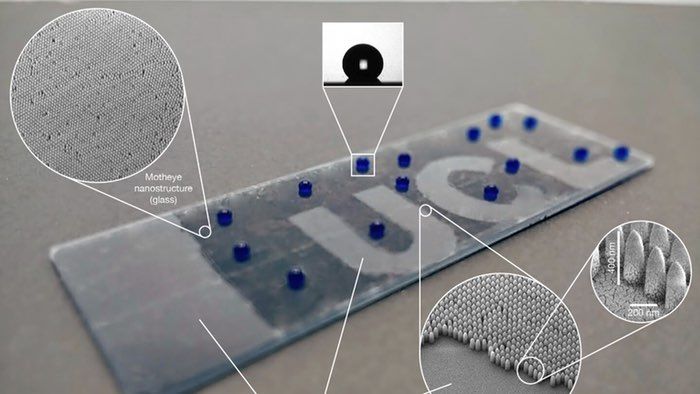A new type of glass to reducing electric bills.
A revolutionary new type of smart window developed by the University College London (UCL) and the Engineering and Physical Sciences Research Council (EPSRC) could cut window-cleaning costs in tall buildings while reducing heating bills and boosting worker productivity. Partially inspired by the reflective properties of moth eyes, this smart window is said to be self-cleaning, energy saving, and anti-glare.
When rain hits the outside of the smart window it forms spherical droplets that roll over the surface and pick up dirt, dust and other contaminants, then carries them away. This can either eliminate or reduce the need for manual cleaning.
A very thin (5-10nm) thermochromic coating of vanadium dioxide prevents heat loss during cold weather, plus it keeps heat-causing infrared radiation from entering during hot weather. Thermochromic refers to the ability of a material to change color with changes to temperature. Vanadium dioxide is a cheap and abundant material, and offers a less expensive and more sustainable alternative to silver and gold-based and other coatings used by current energy-saving windows.
